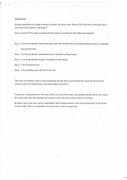The elimination of water from refractory castables can't be done too slowly, but it can be done too quickly, resulting in damage and possible steam spauling. Most castable refractories contain burn out fibres which leave behind a network of tiny pipes through which moisture can escape. This is not a total insurance against damage, but will allow the slow removal of moisture to reduce the possibility of damage. (water expands in volume by over 1500 times). You should follow the manufacturers instructions, but here's general advice for all castable refractories.
The Curing and Firing of Refractory Castables
Densecretes and Litecretes
Installed refractory linings and castings containing calcium aluminate cement binders should be cured prior to drying. This applies to both cast and gun placed material. Curing is necessary to prevent moisture loss during the setting of the material. If the moisture loss is allowed to occur, the refractory material will be weaker due to an incomplete hydration process of the cement binders.
Curing time should be at least 24 hours and maybe undertaken by several methods:-
1 Covering the refractory concrete with wet Hessian bags which must be kept wet
2 Covering with plastic sheeting
3 Spray the surface with a curing compound
4 Spray the surface with a fine water spray
Drying of Densecretes and Litecretes
After curing the lining should be air dried for up to 24 hours. If the lining is greater than 250mm, curing should be 24 hours. If Q.T. fibre is present in the refractory concrete, this step may be reduced to 8 to 12 hours for linings greater that 100 mm.
Firing of Densecretes and Litecretes
Raise the temperature of the lining to 100ºC to 150ºC at a rate of 15 to 25ºC per hour and hold for 8 to 12 hours depending upon the lining thickness. Ensure steaming ceases before heating the lining further.
Increase the temperature to 500 to 600ºC at a rate of 25 to 50ºC per hour and hold for 1 hour per 25mm of lining thickness; and
Increase the temperature to the final working temperature plus 25ºC if possible at a rate of 50 to 100ºC per hour and hold for 1hour. Never exceed the maximum service temperature of the refractory castable.
REMARKS:
1 The holding time is dependent upon the lining thickness. For each 25mm thickness above 200mm an extra holding time of one hour per step is recommended.
2 Preheating should be carried out as slowly as possible and with a good control over temperature. Refractory castables usually have a dense structure which does not allow the water to escape easily. A too rapidly increased temperature may create steam formation in the structure of the castable, thus causing spaulling of the layers from the surface and/or cracks. During preheating sufficient ventilation should be provided so that the water vapour can escape.
3 Temperatures are the lining temperatures measured on the surface of the lining.
4 It is of critical importance to execute a uniform and graduated drying out procedure with professional standards and practice. This schedule is accordingly made available without warranty of any kind. The firm or person executing the drying out procedure is solely responsible for any damages
5 If you see steam, back off, you're going at it too hard.
Here is the firing schedule we provide for our product. Because the firing of the oven is done with wood, flame impingement on the dome will produce an enormous difference in temperature from the base to the top of the oven. This huge difference in temperature is accompanied with a similar difference in thermal expansion. Once the oven is quite dry the temperature rise will be much more even.This flame impingement can be largely reduced by using BBQ briquettes in conjunction with some small pieces of wood.
